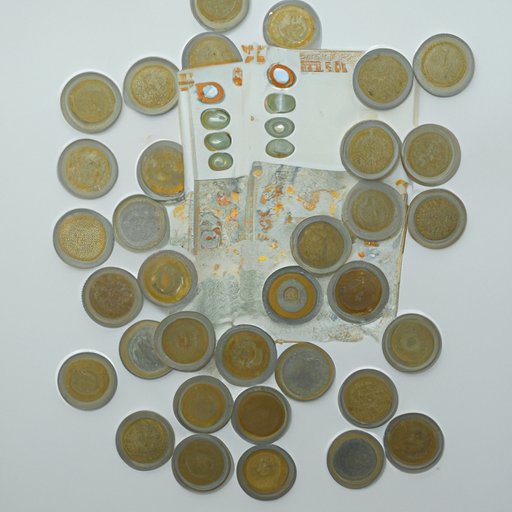
What is Money Made From? Exploring the Materials, History, and Future of Currency
Money is an integral part of our daily lives, yet many of us never stop to consider what it’s actually made from. From ancient coins to modern-day digital currencies, money has evolved dramatically over time. Understanding the materials, history, and future of money can provide insights into economic, environmental, and social issues. In this article, we will explore what money is made from from a variety of perspectives, including historical, economic, anthropological, environmental, and technological.
Historical Perspective
The concept of money has been around for thousands of years, dating back to ancient civilizations. Early forms of currency included items such as seashells, beads, and livestock. Metal coins were first introduced in China around 1,000 BCE and were later used by civilizations such as the Greeks and Romans. Paper money was first created in China during the Tang Dynasty (618-907 CE).
The materials used to make currency have changed over time. While gold and silver were commonly used in ancient coins, copper and nickel also became popular materials. In modern times, paper and polymer materials have been used to create physical currency. Nowadays, most currency is digital and created through a central bank, rather than being backed by a physical commodity.
When comparing different historical currencies, it is fascinating to see how they reflect the values and economy of their respective times. For example, the design of Roman coins featured the image of the emperor, depicting their power and status. In contrast, the microtext and metallic thread on the new Canadian currency showcases a focus on security and technology.
Economic Analysis
One of the most significant debates in economics is how money is created. There are different theories on this topic, including the “state theory of money” and the “credit theory of money”. The “state theory of money” suggests that money is created and issued by a central authority, such as a government or central bank. The “credit theory of money” argues that money is created through debt and lending.
The gold standard, which tied the value of currency to gold, was once common but is no longer used by most countries. Instead, most countries use fiat currency, which is not backed by a physical commodity but rather by the government’s guarantee of its worth. The value of fiat currency is determined by the supply and demand in international markets.
Understanding how money is valued and traded is also crucial. Exchange rates, which determine the value of one currency in terms of another, can have significant impacts on trade and investment. Governments and central banks often intervene in currency markets to try and manage exchange rates and their impact on the economy.
Anthropological Approach
Money is not just an economic concept; it is also a social and cultural construct. Money can represent power, status, and identity, and it has historically been connected to social hierarchies. Different societies have their own monetary systems, which reflect cultural values and beliefs. For example, in some cultures, gifts and hospitality are more valuable than money. In others, the exchange of currency is seen as the most important form of transaction.
The social and cultural significance of money has been studied by anthropologists for years. Money can provide a lens into social relationships and power structures. For example, the use of cash versus credit cards can be linked to social class. The design of currency, as seen in the example of Roman coins, can also reflect the ideology of the ruling class.
Environmental Discussion
The production of physical currency can have significant environmental impacts. Resources such as metals, paper, and ink are used to create currency, and the process can generate waste and pollution. The mining of metals like gold and silver can also contribute to environmental destruction.
There are alternative currencies with lower environmental impact. In some places, local currencies are used to support local economies and reduce waste. Environmentalists have also advocated for digital currencies like Bitcoin because they do not require physical resources.
Technological Examination
Digital currencies have become increasingly popular in recent years. Rather than being created by a central authority, digital currencies like Bitcoin are created through a process called mining. Mining involves solving complex mathematical equations, and the miners are rewarded with digital currency. Blockchain technology, which allows for secure and decentralized record-keeping, is used to support digital currencies.
There are debates around the future of digital currencies and how they will affect the economy. Some see them as an opportunity for financial innovation and reducing the influence of governments and central banks. Others worry about the lack of regulation and potential for digital currencies to be used for illegal transactions.
Conclusion
Understanding what money is made from is essential to understanding its economic, social, and environmental impacts. From the historical materials used to modern digital currencies, money has evolved over time and reflects the values and economy of the times. Theories of money creation, including the state and credit theories, offer insight into how currencies are created. Anthropological and environmental perspectives highlight the social and environmental costs of money production. Finally, digital currencies demonstrate the innovative potential of currency and the challenges that come with developing new monetary systems.
Overall, awareness of the materials, history, and future of money can help individuals make informed decisions about their finances and contribute to larger discussions about the role of money in society.





